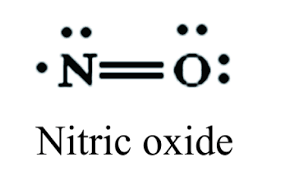Published on May 8, 2017
Could the sun be good for your heart?
Although sunlight is a key factor in the development of skin cancer, the chance of death due to heart disease is far more likely than the chance of death due to skin cancer. We need to weigh the risks and benefits of healthy sun exposure – it is not an all or nothing proposition.
Research from:
Richard B. Weller, MD, FRCP
University of Edinburgh
MRC Centre for Inflammation Research
Watch TED video
Read Associated Paper
Dr. Weller studied in England, Australia, and Scotland. His research training was in the laboratories of Professor Victoria Kolb-Bachofen in Düsseldorf, Germany and Dr. Tim Billiar in Pittsburgh, USA. He wrote the textbook Clinical Dermatology in 2013 with the hopes of enthusing family doctors with the joy and challenge of diagnosing and treating skin disorders. His research on skin and nitric oxide has made him passionate about helping people understand the benefits of sunlight. In fact, one of his recent speaking engagements was titled, Soak Up the Sun and to Hell with Skin Cancer!
TED Talk
Weller gave a TED talk in March 2012, Could the Sun Be Good for Your Heart? describing both his training and his transition into researching mortality. Why do different cultures have different mortality rates? Did the Aussies have lower mortality rates due to their active lifestyle? Why did the Brits have an increased rate of heart disease, and deaths due to heart attacks, heart failure, and stroke?
He explains that the sun is good for you. And, not just the vitamin D you produce by being in the sun. He considers epidemiologic data about vitamin D as a marker for sun exposure and goes on to argue that there are additional benefits from the sun, especially for cardiovascular disease.
“High vitamin D levels, I think, are a marker for sunlight exposure, and sunlight exposure, in methods I’m going to show, is good for heart disease.”
– Dr. Richard Weller
The sun produces nitric oxide in our bodies
 Weller explains the benefits of nitric oxide which our bodies produce from sun exposure. Benefits include dilated blood vessels which lower blood pressure and dilated coronary arteries which stop angina.
Weller explains the benefits of nitric oxide which our bodies produce from sun exposure. Benefits include dilated blood vessels which lower blood pressure and dilated coronary arteries which stop angina.
After studying nitric oxide in mouse as well as human models, he came to realize that stable precursors of nitric oxide (nitrate, nitrite) are stored in the skin, the largest organ in the body. It is designed to be released, and flow abundantly in the body, after sun exposure – which is a natural event that occurs daily. He chose to experiment with people using sunlamps, so that he could expose their skin to UVA and not UVB (thus not introduce vitamin D into the equation). He confirmed that UVA exposure to the skin raised nitric oxide levels in the blood and reduced overall blood pressure.
Weller goes on to explain how UV exposure from the sun works to release nitric oxide in different latitudes during different times of the year – illustrating very little nitric oxide production in Britain in the winter, which he surmises accounts for the higher rate of health issues that occur farther away from the equator.
Conclusion
He concludes his talk with this statement:
“I’m a dermatologist. My day job is saying to people, ‘You’ve got skin cancer, it’s caused by sunlight, don’t go in the sun.’ I actually think a far more important message is that there are benefits as well as risks to sunlight. Yes, sunlight is the major alterable risk factor for skin cancer, but deaths from heart disease are a hundred times higher than deaths from skin cancer. And I think that we need to be more aware of, and we need to find the risk-benefit ratio. How much sunlight is safe, and how can we finesse this best for our general health?”

